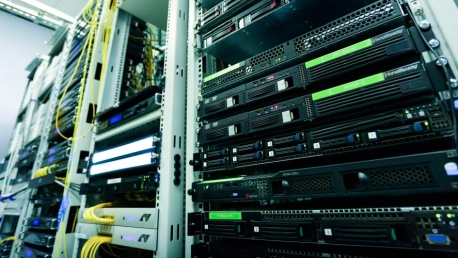The recent development of data-hungry technologies, such as the Cloud, IoT, and AI, is driving the demand for data center capacity to new heights. As humanity creates, copies, and consumes more and more information, we are entering a new phase in the evolution of the data center industry. From army bunkers and recycled mines to purpose-built submarines, operators are getting more creative when choosing where to install data centers.
In this article, we take a sneak peek at what the future holds for the data center industry.
Bunkers and Recycled Mines
Almost ten years ago, DNB, Norway’s largest finance & banking group, relocated its data center to a former NATO bunker operated by Green Mountain Data Center. DC1-Stavanger is a former North Atlantic Treaty Organization arms depot converted into a 22,600 square meters colocation center. The data center, which is Tier III certified, consists of 6 concrete bunkers buried deep in the mountain and offers several server rooms for rent, ranging in size from 50 sqm to 1,500 sqm. Cooling is provided by water drawn from 100 m below the surface of a fjord, and the average annual temperature is around 8º C.
In the US, army facilities are also being repurposed as data centers. For example, Data Shelter 1 is a former fallout shelter located in Florida, which was built for the Department of Defense in 1964, at the height of the Cold War, and was part of the NORAD (North American Aerospace Defense Command) network. It was recently converted into a Tier IV colocation center, with a total available area of approximately 1,579,352 sqm.
Converting bunkers into data centers has become so popular nowadays that even hackers are adopting the trend. In 2021, the German authorities announced the successful conclusion of a large-scale operation to shut down “CyberBank,” an illegal data center hosting 200 servers. The data center was located in a former NATO compound, with four underground levels featuring 5,500 square meters of available space, which had also been used by the army as a data center.
But it’s not just military resources that are at a premium in the data center industry, it’s also… mining. For example, US company Cavern Technologies operates a colocation center (with a surface area of 3,700 square meters) at a depth of about 40 meters in a former mine in Kansas. Bluebird Network has a colocation center in Missouri—Bluebird Underground, located 26 meters underground in a former limestone quarry.
On the Surface and at the Bottom of the Ocean
The maritime environment is also an increasingly appealing destination for data center operators.
This year, Nautilus Data Technologies started building a floating data center in the Irish port of Limerick. The company behind the EUR 35 million project entered the market four years ago and installed the first prototype on a barge moored in San Francisco harbor.
Keppel Data Centres, a Singapore-based data center operator, has recently announced plans to launch its own floating hyperscale data center, consisting of several modules with a capacity of 10 MW.
Keppel, which funded Nautilus to the tune of USD 10 million in 2017, pointed to a reduction of construction and ownership costs of 30-50% to justify its choice of locating the new facility on water.
Microsoft also plans to tap into the potential of the marine environment through Project Natick, a purpose-built submarine, which will be used as a data center. The Northern Isles Data Center, the Redmond-based company’s second underwater project, is actually a cylindrical container, about 12 meters long, that houses 12 racks and 864 servers. The project is designed so that it requires no human intervention for up to five years and is highly energy efficient (PUE of 1.07), using water cooling for each rack’s radiators. The prototype has already been submerged to a depth of 35 meters off the Scottish coast and is connected to Orkney Island by an undersea cable, which provides both renewable energy (wind and solar) and a connection to the Microsoft grid. At a later stage, wave energy is also planned to be harnessed with the help of specialists from the European Marine Energy center.
Conclusion
There is a good chance that data centers will gradually be moving out of the big cities, which are reaching a saturation point. The phenomenon is starting to become visible in Europe, where Amsterdam suspended the construction of data centers, and London has slowed down its pace of growth. For now, data center operators have moved to the suburbs. However, experts believe that climate change, increased processing power requirements, and the coming into force of new “green” directives will accelerate the migration to new technologies and new locations that allow for a higher level of energy efficiency.









